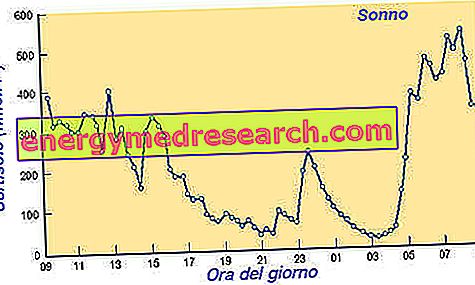
Wisky distillation
The traditional still for distillation of whiskey is entirely made of copper, since this metal is able to remove the various unpleasant sulfur-based compounds from alcohol; the most modern stills instead, are lined in stainless steel. The simplest one is called "pot still" and consists of a single heated chamber and a tank to collect the purified alcohol.
For the "grain whiskeys", the "Bourbons" and other American whiskeys, column distillers are more commonly used. The column stills function as a multitude of individual stills in series, united in a long vertical tube (similar to a silos). If a "pot still" is able to obtain a vapor composed of 40-50% alcohol, a column still can reach an alcohol content of 95.6%. This system is called azeotropic distillation (of alcohol and water).
Whiskey aging
Whiskey does not mature in bottle, but only in cask; the age of the drink is only the time between distillation and bottling. This reflects the interaction between whiskey and cask, which varies the chemical and taste composition of the product. Whiskeys that have been bottled for many years can be considered "rare", but not "old", and are not necessarily "better" than other more recent whiskeys that have matured in barrels for a similar time. After one or two decades, aging does not necessarily improve the quality of whiskey.
Whiskey Packaging
Most whiskeys are sold with an alcohol content of 40% vol, which in many countries is considered the minimum legal threshold; however, this parameter is very variable and the so-called "cask-strength whiskey" can reach even double this value.
Whiskey export
Scotch whiskey is considered the most well-known national product in the world. Over the past ten years, exports have increased by 87% and contribute to the UK economy for over 4, 250, 000, 000 pounds (25% of the total for food and drink).
In 2012, the United States of America complex was the largest importer of Scotch whiskey for a total of 655, 000, 000 pounds, followed by France 535, 000, 000.
The Scotch whiskey industry is also a very important source of work and, supporting around 35, 000 employees, is among the top five national sectors. The areas of greatest production are the "Speyside" and "the Isle of Islay", where eight distilleries emerge. In many places, this sector is closely linked to tourism, with many distilleries operating as attractions worth £ 30, 000 GVA (gross value added) each year.
In 2011, 70% of Canadian whiskey was exported, with about 60% for the USA, while the rest reached other countries in Europe and Asia. In the USA, only in 2011, 15, 000, 000 Canadian whiskeys were sold.



